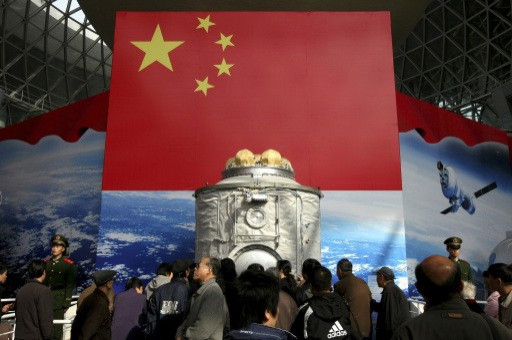China Celebrates A Decade Of Manned Spaceflight, Lays Out Ambitious Plan For The Future

China is celebrating 10 years of manned spaceflight and looking ahead to the future of their space program. The China National Space Administration, CNSA, launched the Shenzhou 10 spacecraft in June and is planning to launch a moon orbiter by the end of 2013 and a space station by 2023.
Three Chinese astronauts, also known as taikonauts, were aboard Shenzhou 10 and China has sent 10 astronauts, including two women, into space, reports Agence-France Presse. Yang Liwei was the first astronaut sent into space by China in 2003 and the country hopes to send a man to the moon in the near future. While that goal does not have a set date, CSNA is keeping busy with several planned projects.
China’s moon mission, Chang’e-3, named after the lunar goddess, unveiled the moon rover in September and asked the public to name the vehicle, reports Wall Street Journal. China Aerospace Science and Technology Corporation said the vehicle’s name will be revealed in November with the launch scheduled for December. According to the report from the Xinhua news agency, the lunar rover will be China’s first spacecraft to make a soft landing on a celestial body. The rover sits on six wheels and will weigh 140 kilograms, 308 pounds, and features two wings for what the WSJ described a “retro” look. China previously launched two moon probes, Chang’e-1 and Chang’e-2 in 2007 and 2010, respectively, reports Xinhua. The upcoming lunar rover will collect soil samples and will be equipped with several onboard instruments.
As part of its plans to expand the space program, China will add a fourth launch center by 2015, located in the island province of Hainan, reports Xinhua. The Jiuquan Satellite Launch Center is used for manned spaceflight and was the launch site for Shenzhou 10 while the Taiyuan Satellite Launch Center and the Xichang Satellite Launch Center are used for satellites and probes.
The benefits of developing a space program are numerous, notes AFP. Technological advances, global recognition, military developments and a possible increase in students enrolling in tech education programs are just a few of the benefits mentioned in the AFP report.
The biggest milestone for China’s space program will occur in 2023 with a possible space station. The International Space Station, operated by NASA, Roskosmos, the European Space Agency, the Canadian Space Agency and the Japan Aerospace Exploration Agency, will be retired in 2020, and there have been no announcements of a planned successor.
© Copyright IBTimes 2024. All rights reserved.






















